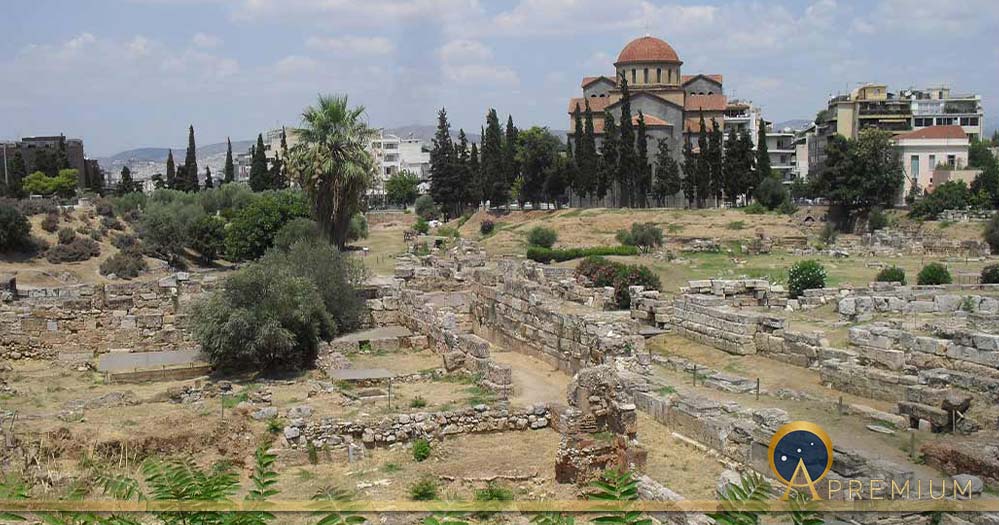Kerameikos, Restoring Athens’ Necropolis To Life
From the ruins and rubble rises the narrative of the history of Kerameikos, restoring life to the Athenian necropolis. The obituaries on the gravestones and stelae and the sculptures on the marble sarcophagi monuments and naϊskos reflect people who mattered so much to their loved ones that their individual memories have been immortalized in stone.

Sacred Gate kouros (center) in Room 1 of the Kerameikos Archaeological Museum (
KatherineSoulis / CC BY-SA 4.0)
Development Of Kerameikos
The Eridanos River valley bordering the north-west of ancient Athens, held the Deme of Kerameis, domain of the potters. According to mythology, Keramos was the son of the god Dionysus and Ariadne, the Minoan princess who had sailed with her lover the hero Theseus back to Athens after his defeat of the Minotaur at Knossos. However, Theseus abandoned her on the island of Naxos, where the god Dionysus had found her sleeping and wedded her. They had many children, of which Keramos was one – the etymology of the word ‘ceramics’ for pottery comes from Keramos. The Deme of Kerameis extended from the agora to the hill of the Pnyx and pottery workshops were later excavated up to the Academy of Plato.

Map of the Themistoklean Wall with Eridanos River flowing through Kerameikos (Public Domain)
Since the valley was initially a marshland, there was no ancient settlement, but people had buried their dead here since the Early Middle Helladic period at the beginning of the second millennium BC. By the end of the 12th century BC more people were buried on the north bank of the Eridanos, as more than a hundred Late Mycenean graves (1200 – 1100 BC) testify. These were simple cist graves, with no identification of the deceased, but they were accompanied by funerary artifacts such as amphorae. By 900 BC the cemetery had extended to the flat banks of the river. At this time bodies were cremated on a pyre outside the grave, and the ashes were transferred to an urn, which was buried inside the grave, covered with earth to form a tumulus. A simple stone stele marked the grave. The deceased of these graves were accompanied by richly geometric decorated ceramic grave offerings. This community may have formed the nucleus for the Deme of Kerameis to develop around the Eridanos River, which probably afforded the potters their clay for their wares.
Like this Preview and want to read on? You can! JOIN US THERE ( with easy, instant access ) and see what you’re missing!! All Premium articles are available in full, with immediate access.
For the price of a cup of coffee, you get this and all the other great benefits at Ancient Origins Premium. And - each time you support AO Premium, you support independent thought and writing.
Dr Micki Pistorius has an Honours Degree in Biblical Archaeology
Top Image: Overview of the cemetery of Kerameikos, Athens (Image: Courtesy Micki Pistorius)
By: Micki Pistorius



















